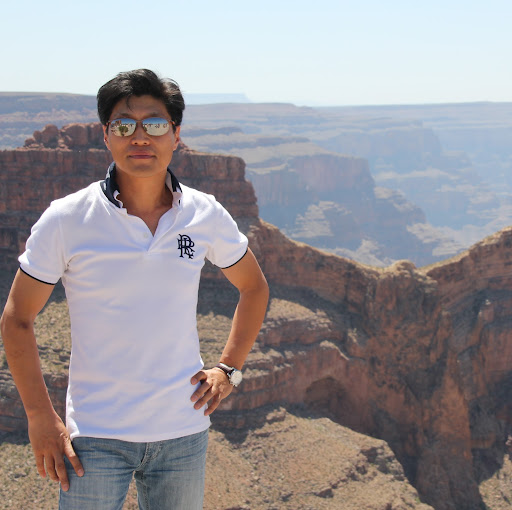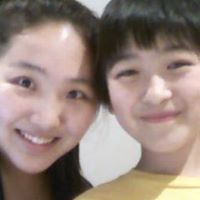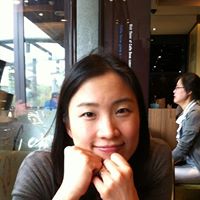Jaewon Shin
age ~54
from Los Altos, CA
- Also known as:
-
- Jae Won Shin
- Shin Jaewon
Jaewon Shin Phones & Addresses
- Los Altos, CA
- Mountain View, CA
- Santa Clara, CA
- Stanford, CA
- San Jose, CA
Resumes

Footwear Designer At Adidas Originals
view sourcePosition:
Footwear Designer at Adidas Originals
Location:
Nürnberg Area, Germany
Industry:
Design
Work:
Adidas Originals - Herzogenaurach since Apr 2012
Footwear Designer
Anthony L&S LLC/Togast LLC - New York Sep 2007 - Mar 2012
Footwear Designer
Showcredo - Seoul Jun 2004 - Jan 2006
Internship
Footwear Designer
Anthony L&S LLC/Togast LLC - New York Sep 2007 - Mar 2012
Footwear Designer
Showcredo - Seoul Jun 2004 - Jan 2006
Internship
Education:
Fashion Institute of Design & Merchandising 2006 - 2007
AA, Footwear Design Kyungwon University 2001 - 2006
BA, Textile Design
AA, Footwear Design Kyungwon University 2001 - 2006
BA, Textile Design
Interests:
fashion, footwear, illustration, interior, cooking & baking

Architecture Lead And Engineering Manager, Platform Architecture
view sourceLocation:
378 Jardin Dr, Los Altos, CA 94022
Industry:
Computer Hardware
Work:
Broadcom Corporation since May 2006
Principal Scientist/Video Architect
Principal Scientist/Video Architect
Education:
Stanford University 2004
Doctorates, Doctor of Philosophy, Electrical Engineering Stanford University 1999
Master of Science, Masters, Electrical Engineering Yonsei University 1997
Yonsei University
Bachelors, Bachelor of Science, Electronics Engineering, Electronics
Doctorates, Doctor of Philosophy, Electrical Engineering Stanford University 1999
Master of Science, Masters, Electrical Engineering Yonsei University 1997
Yonsei University
Bachelors, Bachelor of Science, Electronics Engineering, Electronics
Skills:
Algorithms
Computer Vision
Soc
Machine Learning
Embedded Systems
Image Processing
Video Processing
C++
Signal Processing
C
Semiconductors
Matlab
Python
Perl
Simulations
System on A Chip
Research and Development
Computer Science
Set Top Box
Application Specific Integrated Circuits
Chip Architecture
Hardware Architecture
Cross Functional Team Leadership
Consumer Electronics
Computer Architecture
Digital Signal Processing
Artificial Intelligence
Computer Vision
Soc
Machine Learning
Embedded Systems
Image Processing
Video Processing
C++
Signal Processing
C
Semiconductors
Matlab
Python
Perl
Simulations
System on A Chip
Research and Development
Computer Science
Set Top Box
Application Specific Integrated Circuits
Chip Architecture
Hardware Architecture
Cross Functional Team Leadership
Consumer Electronics
Computer Architecture
Digital Signal Processing
Artificial Intelligence
Us Patents
-
Deinterlacer That Adapts To Irregular Video Cadence
view source -
US Patent:8264605, Sep 11, 2012
-
Filed:Dec 22, 2010
-
Appl. No.:12/976256
-
Inventors:Jaewon Shin - Santa Clara CA, US
Brian Schoner - Fremont CA, US -
Assignee:Broadcom Corporation - Irvine CA
-
International Classification:H04N 7/01
-
US Classification:348448, 348446, 348441
-
Abstract:A method and system are provided in which a processor may detect one or more changes in video cadence in a video signal and may adjust a counter value based on each detected change in video cadence. The processor may increase the counter value by a determined amount for each detected change in video cadence. When the counter value becomes larger than a first threshold value, the processor may filter the video signal. The video signal may be filtered utilizing a vertical Nyquist notch filter. Moreover, after each increase, the processor may decrease the counter value based on a decay parameter. When the counter value is less than a second threshold value, where such second threshold value is less than the first threshold value, the processor may disable the filtering of the video signal.
-
Video Source Resolution Detection
view source -
US Patent:8373801, Feb 12, 2013
-
Filed:Aug 19, 2011
-
Appl. No.:13/213729
-
Inventors:Advait Mogre - Sunnyvale CA, US
Darren Neuman - Palo Alto CA, US
Jaewon Shin - Santa Clara CA, US
Brian Schoner - Fremont CA, US -
Assignee:Broadcom Corporation - Irvine CA
-
International Classification:H04N 5/21
-
US Classification:348607, 348625, 382275
-
Abstract:Embodiments for video content source resolution detection are provided. Embodiments enable systems and methods that measure video content source resolution and that provide image-by-image source scale factor measurements to picture quality (PQ) processing modules. With the source scale factor information. PQ processing modules can be adapted dynamically (on a picture-by-picture basis) according to the source scale factor information for better picture quality enhancement. In addition, embodiments provide source resolution detection that is minimally affected by video coding artifacts and superimposed content (e. g. , graphics).
-
Method Of Compensating The Color Tone Differences Between Two Images Of The Same Scene
view source -
US Patent:20080304087, Dec 11, 2008
-
Filed:Jun 11, 2007
-
Appl. No.:11/811717
-
Inventors:Jaewon Shin - Santa Clara CA, US
Ali Tabatabai - Cupertino CA, US -
International Classification:G06F 15/00
-
US Classification:358 16, 358 19
-
Abstract:The color tone compensation method provides a simple and efficient method to compensate the color tone differences between two different sources of images. A first image sample, such as a still image, from a first image capturing source and a second image sample, such as a video frame, from a second image capturing source are aligned, and a tone-mapping estimation routine is applied to the two aligned images. The tone-mapping estimation routine uses the pixel intensity value histograms associated with the two aligned images and generates a tone mapping table. The tone mapping table includes a conversion intensity value for each intensity value in the second image. The conversion intensity value is a statistical measure, such as the mean, calculated according to the data in the corresponding pixel intensity value histogram. The tone-mapping table is applied to any image generated by the second image capturing source, thereby generating a new image with similar color tone as the first image generated by the first image capturing source.
-
Method And System For Processing Chroma Signals
view source -
US Patent:20090073319, Mar 19, 2009
-
Filed:Sep 14, 2007
-
Appl. No.:11/855678
-
Inventors:Darren Neuman - Palo Alto CA, US
Jaewon Shin - Santa Clara CA, US
Brian Schoner - Fremont CA, US -
International Classification:H04N 9/78
-
US Classification:348668, 348E09036
-
Abstract:Methods and systems for processing chroma signals are disclosed. Aspects of one method may include compensating a modulated chroma signal for distortions due to audio trap filtering. The compensated chroma signal may be demodulated to generate U and V chroma signals. The U and V chroma signals may be low pass filtered, and then YC aligned. YC alignment may comprise correcting portions of the U and V chroma signals based on the luma signal. The correction may be based on, for example, correlation between the U and V chroma signals and the Y luma signal, and/or energy level of the Y luma signal. The corrected U and V chroma signals may be chroma sharpened, where a gain parameter may be changed to change a transition slope for the U and V chroma signals. The chroma sharpened signals may also be clamped to reduce overshoot and undershoot.
-
Method And System For 3-D Color Adjustment Based On Color Region Definition Using Pwl Modules
view source -
US Patent:20090180028, Jul 16, 2009
-
Filed:Jan 15, 2009
-
Appl. No.:12/354268
-
Inventors:David Wu - San Diego CA, US
Darren Neuman - Palo Alto CA, US
Brian Schoner - Fremont CA, US
Jaewon Shin - Santa Clara CA, US -
International Classification:H04N 9/65
-
US Classification:348642, 348E09045
-
Abstract:A video processing system may be operable to utilize one-dimensional (1-D) piecewise linear (PWL) functions to adjust chroma and/or luma parameters corresponding to pixels that are determined to fall within one or more N-dimensional color adjustment regions in spatial representation of pixels' chroma and luma information. The chroma and/or luma parameters comprise Y, Cb, Cr, saturation and/or hue parameters in systems using Y′CbCr color coding. The 1-D PWL functions are operable to generate adjustment data corresponding to one of chroma and/or luma parameters, wherein the adjustment data comprise offset or gain data. The 1-D PWL functions are reprogrammable. The 1-D PWL functions may enable smooth transitions in boundary areas of at least some of the N-dimensional color adjustment regions. Determination of whether pixels fall within the color adjustment regions is based on a plurality of boundary points and/or criteria. Adjustment data corresponding to overlapped regions are aggregated.
-
Method And System For Sharpening The Luma And The Chroma Signals
view source -
US Patent:20090180030, Jul 16, 2009
-
Filed:Jan 14, 2009
-
Appl. No.:12/353826
-
Inventors:Jaewon Shin - Santa Clara CA, US
Brian Schoner - Fremont CA, US
Darren Neuman - Palo Alto CA, US
David Wu - San Diego CA, US -
International Classification:H04N 9/77
-
US Classification:348663, 348E07001
-
Abstract:A video processing system may be operable to utilize multi-band sharpening to process luma signals for image signals. The luma signal may be decomposed into a plurality of frequency band components, wherein each component may be processed separately using different sharpening gains and/or offsets. The multi-band processed components may be combined to generate sharpened output luma signals. The multi-band sharpening may be performed utilizing peaking processing, and the input luma signal and/or LTI sharpened luma signals may be combined with the multi-band peaking sharpened signals to generate the sharpened output luma signals. Corresponding chroma signals may also be adjusted to generate sharpened output chroma signals. Luma and/or chroma sharpening operations may be further adjusted based on coring, clipping avoidance, luma statistics, color region detections, and/or curve control parameters. Sharpened output image signals may be generated based on the sharpened output luma signals and the sharpened output chroma signals.
-
Method And System For Digital Noise Reduction Of Scaled Compressed Video Pictures
view source -
US Patent:20120162525, Jun 28, 2012
-
Filed:Dec 22, 2010
-
Appl. No.:12/975977
-
Inventors:Brian Schoner - Fremont CA, US
Jaewon Shin - Santa Clara CA, US
Olivier Francois Joseph Harel - Mountain View CA, US
Advait Madhav Mogre - Sunnyvale CA, US
Hyeong-Seok Victor Ha - North York, CA -
International Classification:H04N 5/00
-
US Classification:348607, 348E05001
-
Abstract:In a video processing device, scale of a video image is detected for vertical and horizontal directions based on pixel information, for example, per pixel vertical and horizontal gradients. Gradients are utilized or discarded based on picture format, standard deviation of luma levels and pixel location relative to black border edges, graphics and/or overlaid content. Mosquito noise filters are adapted based on scale and/or noise strength. Median and/or linear filter results are selected based on a weakest, a strongest and/or a blended result. Horizontal and vertical operations are performed separately for edge detection, edge strength determination, filtering and filter correction control. Horizontal and vertical block grid spacing and grid shift are determined. Block noise strength is determined. Block noise filters are configured based on scaling and/or noise strength. Filter corrections are limited based on block noise strength. Noise reduction results may be blended to generate a pixel correction value.
-
Method And System For Detecting Analog Noise In The Presence Of Mosquito Noise
view source -
US Patent:20120162526, Jun 28, 2012
-
Filed:Dec 22, 2010
-
Appl. No.:12/976281
-
Inventors:Jaewon Shin - Santa Clara CA, US
Brian Schoner - Fremont CA, US -
International Classification:H04N 5/21
-
US Classification:348607, 348E05077
-
Abstract:A method and system are provided in which a processor, such as a video processor, may determine a flatness value for a current video picture and may adjust a mosquito noise filtering of a subsequent video picture based on the determined flatness value. The flatness value may be determined within a predetermined region of the current video picture, which may be dynamically modified by the processor. The flatness value may be associated with the presence of analog noise in the current video picture, and may be determined based on horizontal and vertical variance values determined for one or more portions of the current video picture. The processor may adjust a mosquito noise strength value of the current video picture based on the determined flatness value and may adjust the mosquito noise filtering of the subsequent video picture based on the adjusted mosquito noise strength value of the current video picture.
License Records
Jaewon Shin
License #:
MT045401T - Expired
Category:
Medicine
Type:
Graduate Medical Trainee
Googleplus

Jaewon Shin (Tr90 비지니스의 기회)

Jaewon Shin

Jaewon Shin

Jaewon Shin

Jaewon Shin

Jaewon Shin

Jaewon Shin

Jaewon Shin

Jaewon Shin
view source
JaeWon Shin
view source
Jaewon Shin
view source
Jaewon Shin
view source
JaeWon Shin
view source
Jaewon Shin
view source
Jaewon Jade Shin
view source
Jaewon Shin
view sourceMyspace
Youtube
Flickr
Get Report for Jaewon Shin from Los Altos, CA, age ~54







